The thick of it: Delving into the neglected global impacts of human waste
Jan 11, 2022
- Though little talked about, our species has a monumental problem disposing of its human waste. A recent modeling study finds that wastewater adds around 6.2 million tons of nitrogen to coastal waters worldwide per year, contributing significantly to harmful algal blooms, eutrophication and ocean dead zones.
- The study mapped 135,000 watersheds planetwide and found that just 25 of them account for almost half the nitrogen pollution contributed by human waste. Those 25 were pinpointed in both the developing world and developed world, and include the vast Mississippi River watershed in the United States.
- Human waste — including pharmaceuticals and even microplastics contained in feces and urine — is a major public health hazard, causing disease outbreaks, and putting biodiversity at risk. Sewage is impacting estuary fish nurseries, coral reefs, and seagrasses, a habitat that stores CO2, acting as a buffer against climate change.
- Waste is often perceived as mostly a developing world problem, but the developed world is as responsible — largely due to antiquated municipal sewage systems that combine rainwater and wastewater in the same pipes. As a result, intense precipitation events regularly flush raw sewage into waterways in the U.S., U.K. and EU.
The food we eat, fluids we drink, and medicines we take, once expelled from our bodies, must end up somewhere. Thanks to a recently published scientific model, the destination of a global flood of human waste into coastal areas has at last been tracked for all to see. And it doesn’t make for a pretty picture.
According to that new model, wastewater adds around 6.2 million tons of nitrogen to coastal waters worldwide annually; equivalent to around 40% of the amount emitted by agricultural runoff. Nitrogen is one of the worst pollutants of our planet’s oceans, causing toxic algal blooms, eutrophication and dead zones. The study mapped 135,000 watersheds planetwide and found that just 25 of them account for almost half the nitrogen “inputs from wastewater into the ocean.”
“The sheer scale of wastewater impacts on coastal ecosystems, especially in terms of nitrogen inputs, was pretty surprising,” said Cascade Tuholske, a postdoctoral researcher at the Columbia Climate School, who was part of the interdisciplinary team that created the model.
In assessing direct and septic coastal wastewater releases, the study found that the worst nitrogen-polluting watersheds are “concentrated in India, [South] Korea and China, but are also found in other continents, and a single watershed — the Chang Jiang (Yangtze) River in northern China — account[s] for (11%) of global wastewater [nitrogen].” In another finding, South America and Africa account for much higher nitrogen levels than previously thought, while a U.S. watershed, the Mississippi, figures among the major offenders.
Nitrogen release is just one problem caused by human wastewater. Tuholske and his team also tracked fecal indicator organisms. They found that the 25 most polluted watersheds —”located on almost every continent” — emit 51% of these organisms, “in particular in densely-populated deltas and estuaries in Southern and Eastern Asia, as well as in Africa.”
The global study doesn’t claim to be comprehensive: “Our paper doesn’t look at heavy metals, phosphorus, plastics. I mean there’s pharmaceutical products [too],” Tuholske said. “The list goes on and on for what we put into our watersheds that are hitting coastal areas.”
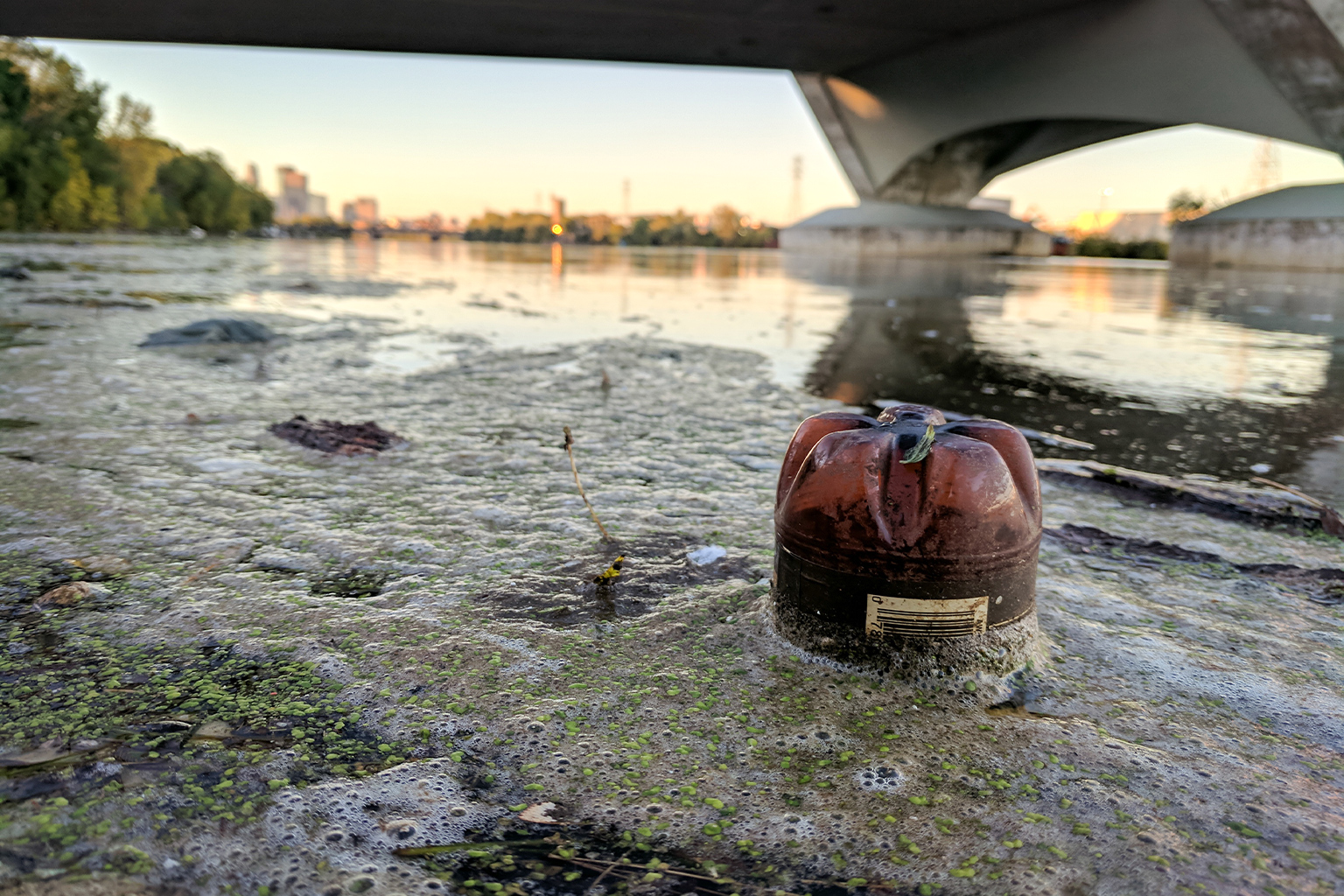

Treating wastewater: A worldwide crisis
We don’t really know as a species how much waste we’re dumping into Earth’s waters, or the full impacts. Best estimates of the total released into the environment without treatment as of 2017 sat at 80%, based on the findings of a U.N. report. A recent estimate lowers this figure to around 48%, which may demonstrate progress, but that figure is also speculative.
Across the world, 3.6 billion people, or nearly half the human population, lacked access to safely managed sanitation services in 2020. An estimated 494 million people still practice open defecation. Water contamination, leading to diseases such as cholera, dysentery, and diarrhea, kills more than 485,000 people annually, according to the World Health Organization.
But that’s only part of the story. If you are among those linked into a modern sewage disposal system, your waste flows to a municipal treatment plant after you flush. But that offers no assurance of proper disposal. Even in countries with functioning treatment plants, those facilities are often dated and incapable of removing a multitude of wastewater pollutants, including nitrogen, phosphorus, endocrine disruptors, and pharmaceuticals.

“I think there is an assumption that if you build a modern, or tertiary wastewater treatment plant, that you are cleaning up the water,” Tuholske said. He points to the Mississippi River as an example: Despite the many treatment plants along its length, this U.S. watershed counts among the world’s 25 worst nitrogen polluters. “I think we would expect that our wastewater treatment in the U.S. would be sufficient to not impact downstream ecosystems, but when we account for nitrogen it’s a huge problem in the Gulf of Mexico.”
According to Tuholske’s study, 63% of the world’s nitrogen pollution generated by wastewater comes from sewage systems, 32% from direct output, and 5% from septic systems. The problem, he adds, is caused by a lack of access to adequate sanitation, as well as treatment systems that are either aging or not designed to strip nutrients and other pollutants from waste.
In fact, a massive waste disposal flaw was built into many municipal sewage systems designed in the late 1800s and 1900s. In the United Kingdom, U.S. and elsewhere, many cities still use combined sewer overflows (CSOs), with the same pipes carrying both human waste and stormwater. As a result, heavy rainfall events can overwhelm sewage treatment plants, with those facilities then forced to shunt the rush of stormwater, raw sewage, or partially treated wastewater directly into rivers and estuaries.

A report by the Rivers Trust, using data from the U.K. Environment Agency, noted more than 400,000 sewage discharge notifications in England in 2020. Scotland faces a similar situation, with thousands of liters of sewage discharged since 2016. About 60% of New York City is still served by CSOs, with swimming beaches intermittently shut down after major rain events due to the public health hazard posed. Fixing the problem isn’t cheap: According to a 2012 U.S. Environmental Protection Agency (EPA) estimate, “CSO corrections would cost New Yorkers $5.1 billion over 20 years. These corrections are in addition to the $26.3 billion needed for other wastewater infrastructure improvements.”
Municipalities around the globe, saddled with aging CSOs, are likewise finding system upgrades prohibitively expensive. But doing so is more urgent than ever: Climate change is increasing storm severity, straining these systems even further. A report by USA Today found that 97% of cites with combined sewers in the U.S. have experienced “an uptick in both annual precipitation and extreme rainfall over the past 30 years,” likely triggering more frequent sewage releases.
Wastewater pollution not only puts public health at risk, but is also damaging our food systems. One study, looking into the role of urbanization in the spread of pathogens and contaminants in Myanmar’s coastal waters, found more than 87 potential human bacterial pathogens and 78 different contaminants in oyster tissue in the Mergui Archipelago.
This isn’t an isolated case of ecosystem degradation. Joleah Lamb, assistant professor of ecology and evolutionary biology at the University of California, Irvine, who led the Myanmar research, is carrying out a similar study in the Seattle area in collaboration with the Washington Department of Fish and Wildlife, Cornell University, and the Washington Department of Natural Resources. Previously, she says, anti-depressants, chemotherapy drugs, heart medications and opioids have been found in Seattle area mussels, potentially linked to wastewater treatment plants and combined sewer overflows.
“We’re also finding very similar types of pathogens in these mussels that we’re finding in Myanmar. So, it’s not just a problem that we’re having in places like Asia,” Lamb noted.
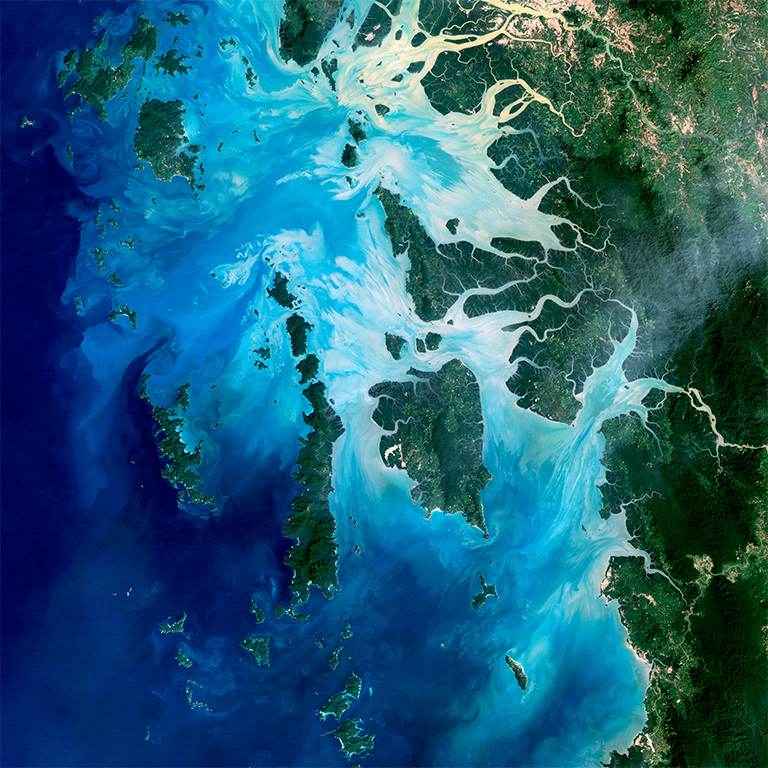
A ‘toxic cocktail’ poisoning the world’s waters
Human waste is a fact of life, and our wholesale failure to dispose of it properly is contributing to intense pressures being placed on Earth’s “safe operating space.” This safe operating zone was first defined in 2009 by a team of international scientists who recognized nine planetary boundaries — limits beyond which humanity cannot go without destabilizing and threatening life on Earth as we know it. Inadequate wastewater disposal is impacting a range of these boundaries.
“There’s more in there than just poop and pee,” Stephanie Wear, senior scientist and strategy adviser at The Nature Conservancy (TNC), told Mongabay. She defines the sewage pollution problem as an “intersectional threat,” with waste representing a “toxic cocktail” for the environment now adversely impacting at least five of the nine planetary boundaries — contributing to nitrogen nutrient pollution, biodiversity degradation, freshwater systems harm, novel chemical entity pollution, and climate change.
Globally, human inputs of nitrogen and phosphorus due to agricultural synthetic fertilizer runoff and human waste have already pushed us beyond the safe planetary boundary set by scientists. On our coasts, this excess of nutrients increases eutrophication risk, posing a threat to a range of aquatic ecosystems by causing toxic algae blooms, red tides and anoxia.
Tuholske and his team overlaid their wastewater pollution map atop coral and seagrass areas around the world. They found that 56% of the planet’s coral reefs and 88% of its seagrass meadows are exposed to nitrogen in wastewater, predominantly due to direct and septic wastewater inputs.


In the last 10 years, algae growth has exploded on the world’s coral reefs, increasing by approximately 20% and coinciding with a decrease in hard coral. A combination of climate change and excess nutrients, acting as fertilizer for algae, is putting coral reefs at risk, says Coral Reef Alliance conservation director Helen Fox.
Wastewater has also been linked to disease in coral. White pox disease in elkhorn coral (Acropora palmata), threatened throughout its range in the Caribbean, has been linked to Serratia marcescens, a human-borne bacteria. “We are seeing similar outbreaks in the Indo Pacific as well,” says Lamb. She notes that black band disease in corals has been linked to increased nutrients and warming events. “It’s kind of this perfect storm for different types of diseases because waterborne pathogens really do well in a warm environment.”
The discovery in wastewater outputs of the coronavirus that causes COVID-19 is also raising concern among scientists because marine species including whales and dolphins are feared susceptible to the disease.

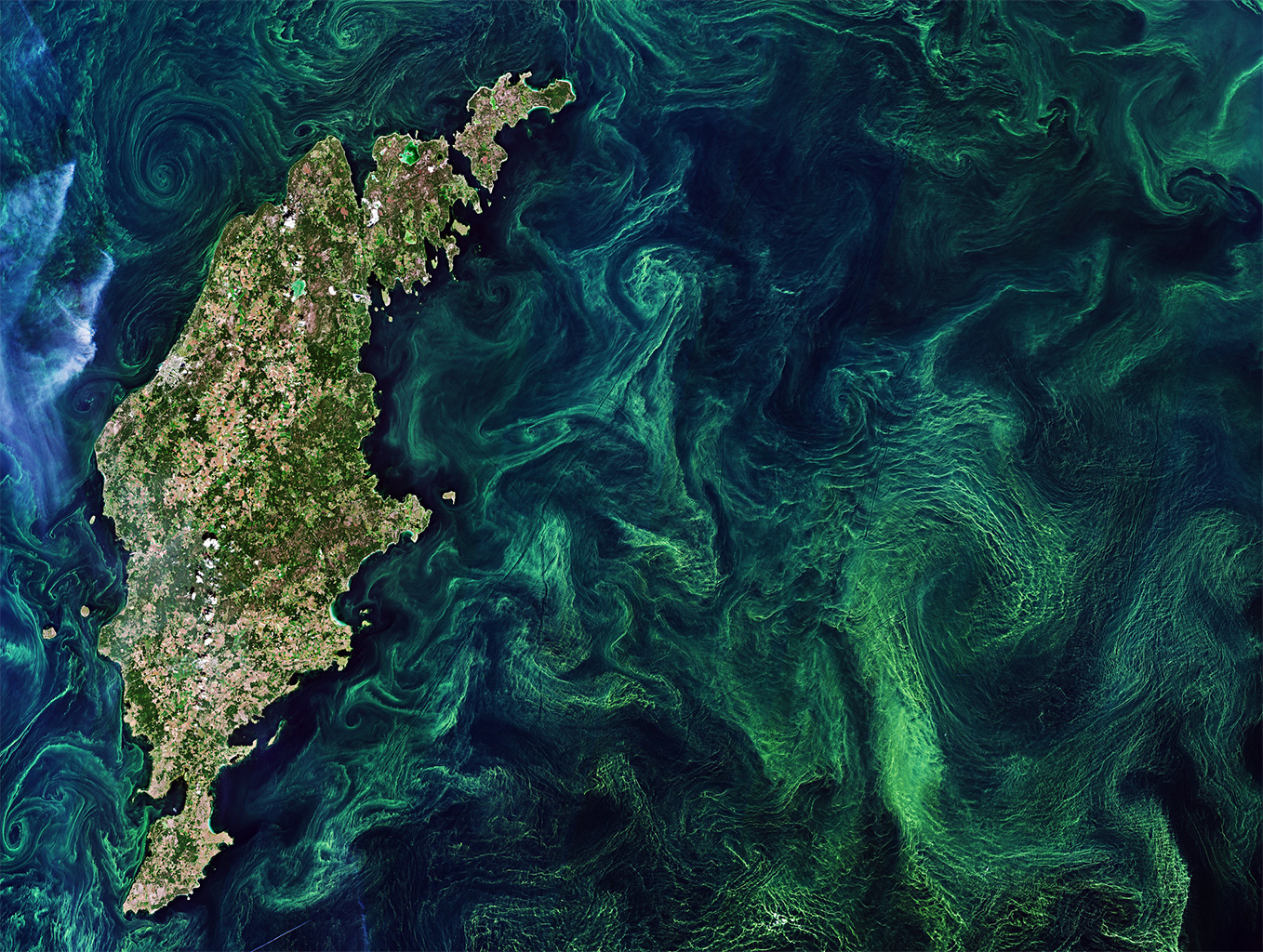
Wastewater, seagrass and planetary boundaries
The world’s seagrasses, and the ecosystems in which they live, provide many ecosystem services, with some seagrass species especially cited for their enormous potential to store CO2, says Benjamin Jones, director of international operations and founder of Project Seagrass. But that capacity is threatened by wastewater and other pollution.
A study released earlier this year indicated that 19.1% of surveyed seagrass meadow area globally has been lost since the 1880s. Some parts of the world show stable seagrass rates, but the overall trend is downward.
Besides their potential to store carbon, seagrasses offer a host of other benefits, including as fish nurseries and habitat for threatened species such as dugongs and sea turtles. Ironically, another service provided may include seagrasses’ ability to curb human disease. Growing evidence suggests that seagrasses play a role in purifying coastal waters and protecting coral reefs too, says Lamb, who was part of the team making this discovery.
“What we found is that there was a 50% reduction in pathogens that affected people, fishes and invertebrates, and we thought that was just amazing. We don’t really know the exact mechanism, but we do think that seagrasses act like a natural wastewater treatment system,” she explains.
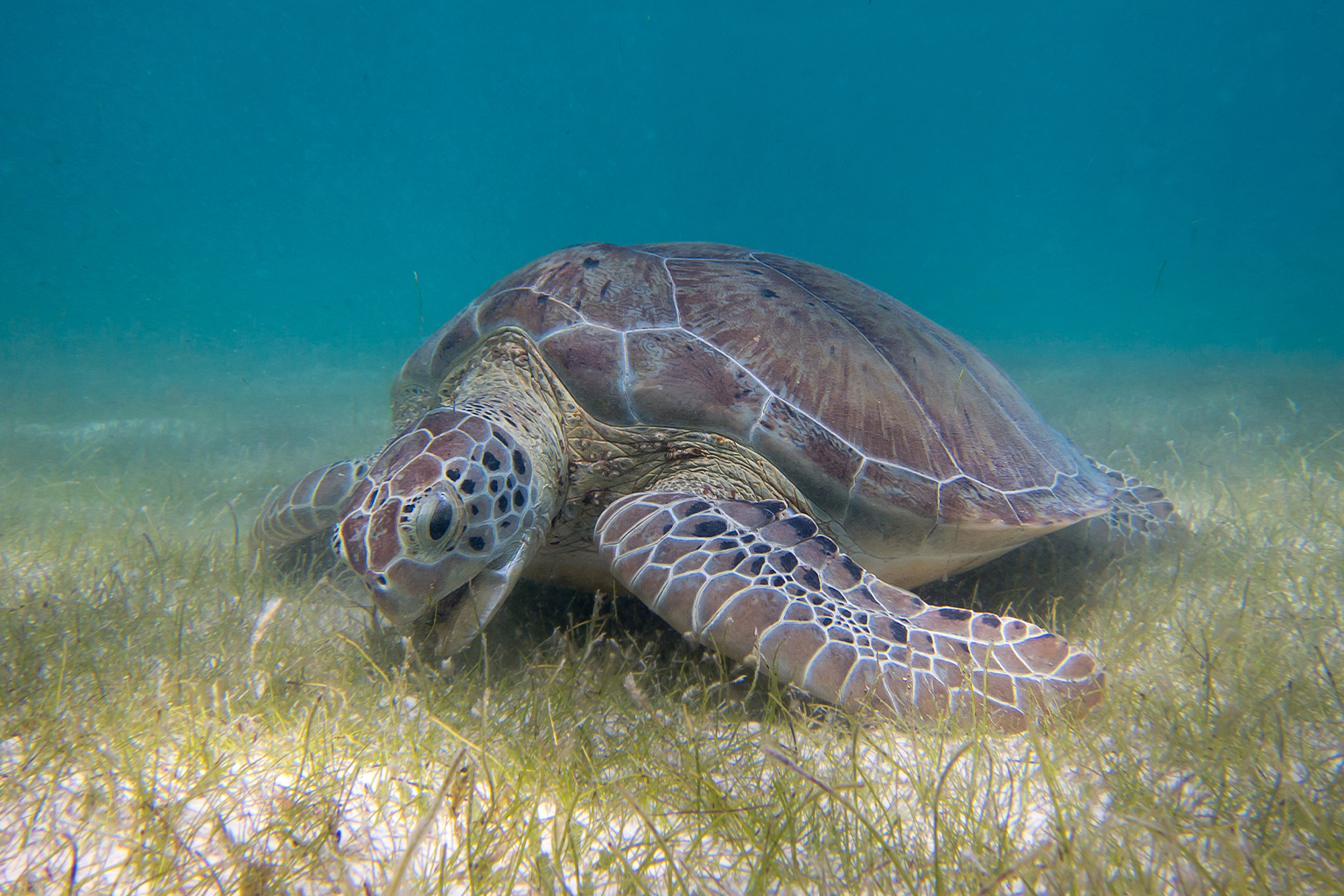
The dumping of human waste into seagrass meadows is adding another level of harm to these already imperiled ecosystems. Nutrient pollution gives a boost to epiphytes, organisms that Jones describes as seagrasses’ worst enemy. “It’s the growth of those on seagrass leaves and within seagrass in environments that create that reduced clarity in the water column [that] basically just smothers the seagrass into oblivion.”
Sewage pollution, by contributing to seagrass meadow destruction, could likewise be worsening climate change. When seagrasses die off, they release the carbon stored in the ecosystem. “The more that we’re degrading the seagrass meadows through things like sewage, through high nutrients, the more we’re at risk of actually increasing net emissions and increasing carbon in the atmosphere,” says Jones.
Further upstream, the impacts on freshwater river systems can be just as severe as on estuaries. In England, only 14% of rivers surveyed in 2020 had good ecological health. None passed a clean chemical bill of health. Mercury is among the contaminants found, a legacy of coal mining, says Christine Colvin, director of partnerships and communications at the Rivers Trust. But other chemicals and pollutants continue making their way into rivers in England and worldwide via sewage, adversely impacting the novel chemical entities planetary boundary in unknown ways. The Earth operating system destabilization threshold for the novel entities planetary boundary has yet to be defined — a level of uncertainty that leaves humanity in the dark as to risk.
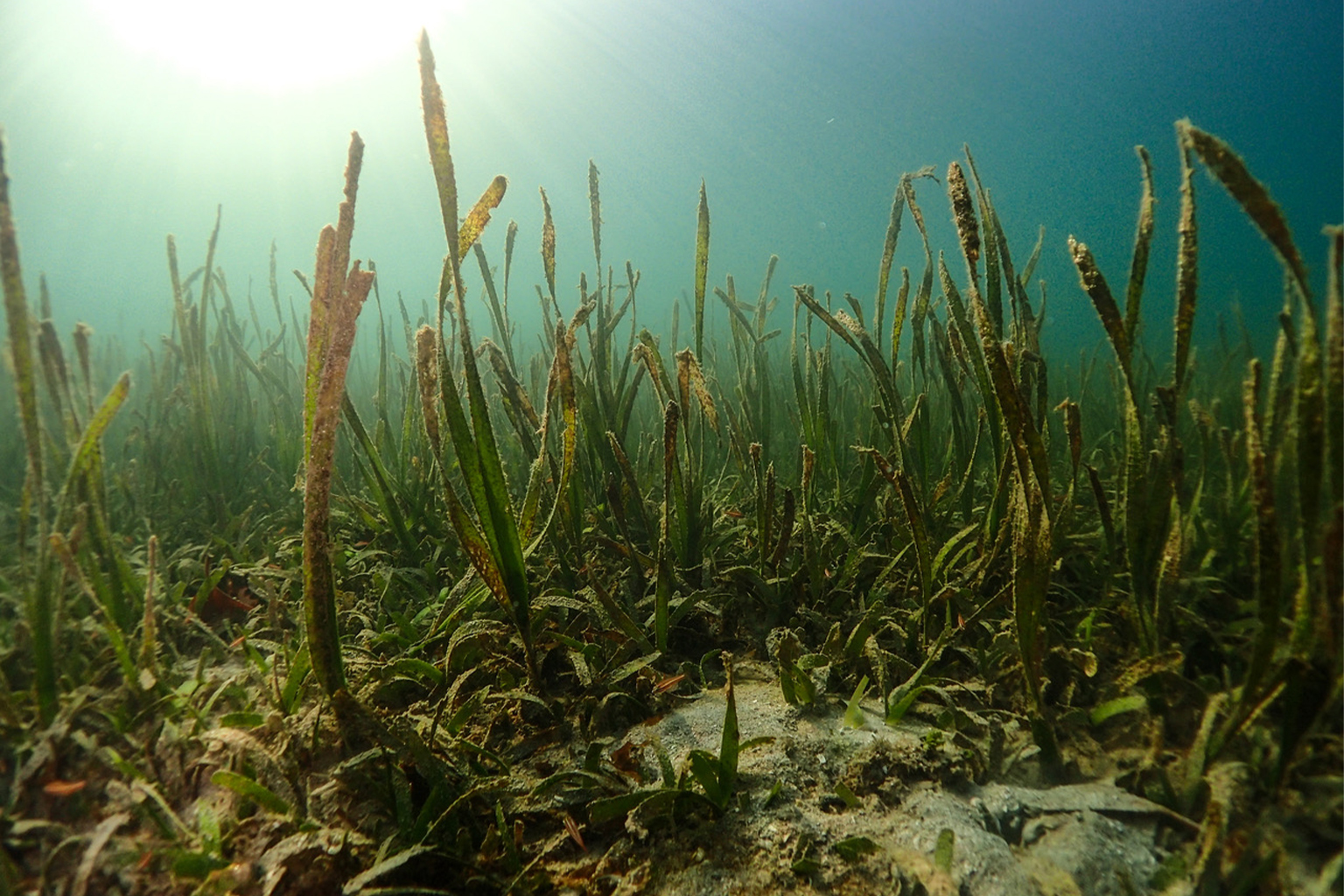
“They say that you can’t manage what you don’t measure. But also, as we’ve started measuring it, the scale of the [water contamination] problem has been shown to be so much greater,” Colvin explains, noting that there have been some improvements in recent years, particularly when it comes to stripping phosphorus from wastewater.
“One of the conversation points within that whole planetary boundaries’ discussion is about the tipping points … [W]here are we approaching tipping points from the cumulative impact of this kind of chemical cocktail that we’re finding in our river systems and lake systems? I think that is something we do need to be paying attention to.”
Some fresh- and saltwater aquatic ecosystems, including freshwater swamps and salt marshes, have the ability to purify wastewater, and are seen as allies in the fight against sewage contamination. But pollutants and nutrient overloads, are putting the survival of these ecosystems at risk.
TNC’s Wear conducted a study tracing diclofenac, an anti-inflammatory pharmaceutical drug, as an indicator of aquatic pollution. She found that 30% of salt marshes globally are exposed to pollution; 76% of salt marshes in China have very high levels of contamination, while that figure is 17% in the U.S. Her research found that, planetwide, “55.7% of ecoregions with very high fish species richness (>451 species) have high or very high levels of [diclofenac].”

Waste on land
Aquatic ecosystems are not the only ones impacted by sewage. Sewage sludge (also known as biosolids), the sticky stuff leftover from the wastewater treatment process, is used worldwide as a fertilizer and as a means of recycling the nutrients that are so damaging to coastal waters. In 2019, the U.S. produced an estimated 4.75 million dry tons of sewage sludge, with just over half applied to agricultural land.
However, depending on treatment methods, sewage sludge can spread the same toxic cocktail oozing into coastal systems on to land. It can seep into soils, enter food chains and groundwater, and also run off into streams and estuaries. In 2019, a U.S. EPA report noted that 116 chemicals found in sewage sludge samples had levels of toxicity high enough to impact humans, while 134 had sufficiently toxic levels to impact the environment.
Microplastics are well-known ocean contaminants, but they also are contained in sewage sludge. Depending on the technology used, wastewater treatment plants can remove up to 99% of microplastics. But the remainder becomes concentrated in processed sludge. One estimate puts the minimum amount of microplastics spread on agricultural lands via sewage sludge at 26,156 tons per year in the European Union, and 21,249 tons annually in the United States. Globally, there may be more microplastics spread on land than are entering the oceans — but we don’t know for sure.

Flush. Reuse. Repeat
“Our waste doesn’t have to be wasted,” concludes TNC’s Wear. Earlier this year, working with Helen Fox, she co-founded the Ocean Sewage Alliance. Despite the wastewater problem’s immense scale, Wear is optimistic over momentum building to find solutions.
Their new organization brings together researchers and practitioners seeking to transform our concept of waste, seeing it instead as a useful renewable resource that doesn’t have to pollute. Reusing waste, once properly treated, could help reduce reliance on agricultural fertilizers, tackle freshwater security, and provide renewable energy sources, states a report by the Stockholm Resilience Institute and the U.N. Environment Programme.
“The problem with wastewater management is really a twin problem for conservationists and people in the public health sphere,” Tuholske said. “Our [global wastewater modeling] paper essentially puts the problem on the map for these two communities of scholars, practitioners, government, and the private sector, to start working together to improve both ecosystem and human health.”
Banner image: A sewage outlet in Bangkok. Image by Trey Ratcliff via Flickr (CC BY-NC-SA 2.0).
Mongabay will explore the solutions to wastewater and sewage pollution in an upcoming article.
Citations:
Tuholske, C., Halpern, B. S., Blasco, G., Villasenor, J. C., Frazier, M., & Caylor, K. (2021). Mapping global inputs and impacts from of human sewage in coastal ecosystems. PLOS ONE, 16(11), e0258898. doi:10.1371/journal.pone.0258898
Jones, E. R., Van Vliet, M. T., Qadir, M., & Bierkens, M. F. (2021). Country-level and gridded estimates of wastewater production, collection, treatment and reuse. Earth System Science Data, 13(2), 237-254. doi:10.5194/essd-13-237-2021
Petrovic, M., Solé, M., López De Alda, M. J., & Barceló, D. (2002). Endocrine disruptors in sewage treatment plants, receiving river waters, and sediments: Integration of chemical analysis and biological effects on feral carp. Environmental Toxicology and Chemistry, 21(10), 2146-2156. doi:10.1002/etc.5620211018
Littman, R. A., Fiorenza, E. A., Wenger, A. S., Berry, K. L., Van de Water, J. A., Nguyen, L., … Lamb, J. B. (2020). Coastal urbanization influences human pathogens and microdebris contamination in seafood. Science of The Total Environment, 736, 139081. doi:10.1016/j.scitotenv.2020.139081
Rockström, J., Steffen, W., Noone, K., Persson, Å., Chapin, F. S., Lambin, E. F., … & Foley, J. A. (2009). A safe operating space for humanity. Nature, 461(7263), 472-475. doi:10.1038/461472a
Sutherland, K. P., Porter, J. W., Turner, J. W., Thomas, B. J., Looney, E. E., Luna, T. P., … Lipp, E. K. (2010). Human sewage identified as likely source of white pox disease of the threatened Caribbean elkhorn coral, Acropora palmata. Environmental Microbiology, 12(5), 1122-1131. doi:10.1111/j.1462-2920.2010.02152.x
Dunic, J. C., Brown, C. J., Connolly, R. M., Turschwell, M. P., & Côté, I. M. (2021). Long-term declines and recovery of meadow area across the world’s seagrass bioregions. Global Change Biology, 27(17), 4096-4109. doi:10.1111/gcb.15684
Lamb, J. B., Van de Water, J. A., Bourne, D. G., Altier, C., Hein, M. Y., Fiorenza, E. A., … Harvell, C. D. (2017). Seagrass ecosystems reduce exposure to bacterial pathogens of humans, fishes, and invertebrates. Science, 355(6326), 731-733. doi:10.1126/science.aal1956
Wear, S. L., Acuña, V., McDonald, R., & Font, C. (2021). Sewage pollution, declining ecosystem health, and cross-sector collaboration. Biological Conservation, 255, 109010. doi:10.1016/j.biocon.2021.109010
Milojevic, N., & Cydzik-Kwiatkowska, A. (2021). Agricultural use of sewage sludge as a threat of microplastic (MP) spread in the environment and the role of governance. Energies, 14(19), 6293. doi:10.3390/en14196293
Collivignarelli, M. C., Carnevale Miino, M., Caccamo, F. M., & Milanese, C. (2021). Microplastics in sewage sludge: A known but underrated pathway in wastewater treatment plants. Sustainability, 13(22), 12591. doi:10.3390/su132212591